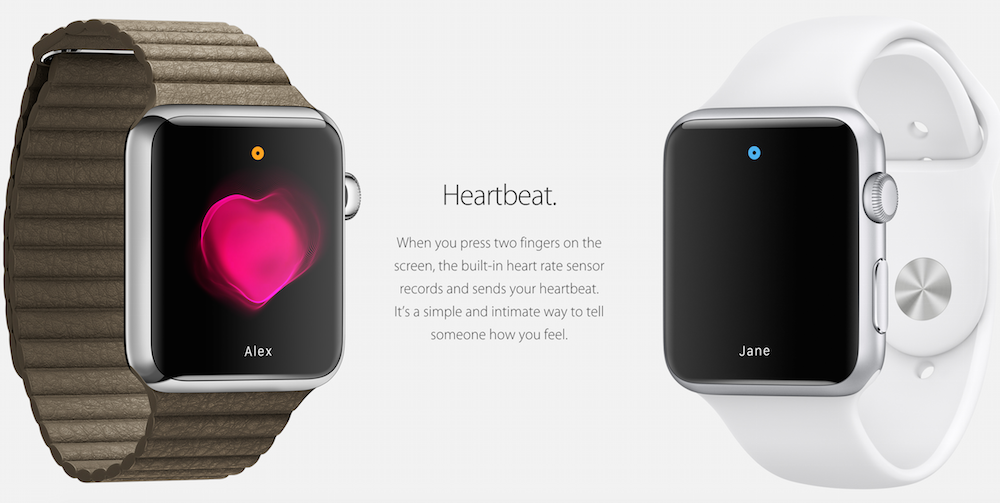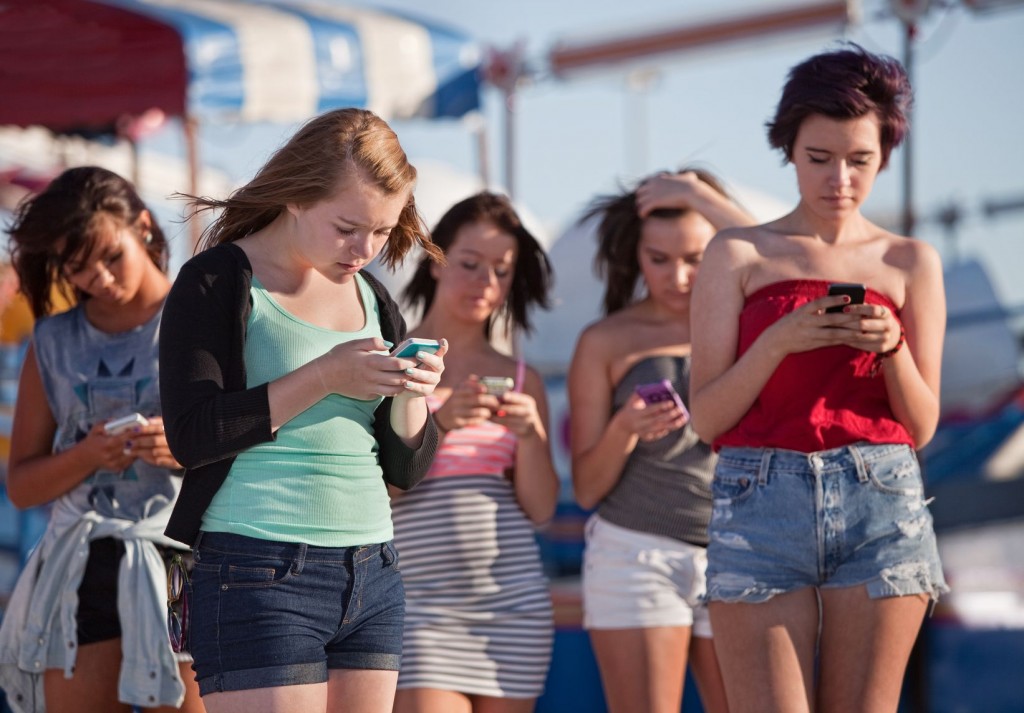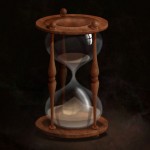The excitement for Cupertino’s latest product has been building and reviews of the Apple Watch are coming in. One of the writers whose opinion on tech I respect is John Gruber of Daring Fireball.
Gruber’s take on the Apple Watch was interesting to me, and I appreciate the fact that he highlighted the device’s shortcomings as an actual watch. It still looks like it will be a hit and I can imagine myself getting the Sport model to experience the first major step in modern, wearable tech.
Wristworn Rejection
What caught my attention most about Gruber’s review were his thoughts on “digital touch”, the functionality to send your heartbeat or taps through your Watch to someone else’s Watch, using its vibrating Taptic Engine. Here’s what Gruber wrote:
I’m old enough, and cynical enough, that I rolled my eyes (at least figuratively) back in September when Apple first demonstrated sending taps and heartbeats to other Apple Watch users. But then I looked past my cynicism, and my eyes were opened.
Imagine:
You’re 16. You’re in school. You’re sitting in class. You have a crush on another student — you’ve fallen hard. You can’t stop thinking about them. You suspect the feelings are mutual — but you don’t know. You’re afraid to just come right out and ask, verbally — afraid of the crushing weight of rejection. But you both wear an Apple Watch. So you take a flyer and send a few taps. And you wait. Nothing in response. Dammit. Why are you so stupid? Whoa — a few taps are sent in return, along with a hand-drawn smiley face. You send more taps. You receive more taps back. This is it. You send your heartbeat. It is racing, thumping. Your crush sends their heartbeat back.
You’re flirting. Not through words. Not through speech. Physically flirting, by touch. And you’re not even in the same classroom. Maybe you don’t even go to the same school.
I’m not saying digital touch is only for teenagers. I’m not saying it’s only for flirting. But the scenario above exemplifies the ways that digital touch opens the door to forms of remote communication that most of us haven’t ever considered. Non-verbal, non-visual, physical communication across any distance. This could be something big.
The first thing that came to mind after reading this was Rollo Tomassi’s post, Buffers. Rollo lists a number of things such as: online dating, pornography, Facebook, email and a scarcity mentality, which he gives as examples of “buffers” men use against rejection from women. These buffers allow men to relate to women in some way without experiencing the harsh feedback of rejection.
Rollo criticizes these buffers because “rejection is better than regret” and the experience gained through rejection will be far more valuable than the avoidance of temporary pain. Furthermore the buffers we employ can easily enslave us, creating a life of long-term, diluted frustration.
Reading down Rollo’s list I realized that all of those buffers (and probably others I’m not aware of) were operative at some point in my life. No one likes rejection, but I’ve come to recognize its importance in helping me grow as a man, it would have helped a lot if I understood this in my teens.
Digital Distraction
Smartphones in general and Facebook in particular have been heralded as ground breaking communication mediums. The problem though is that they have largely become substitutes for real, human interaction. Millenials especially, raised with the internet, are less prepared for the visceral, and sometimes unpleasant feedback that the world gives them. Being yelled at online when someone uses ALL CAPS !!! isn’t pleasant, but it pales in comparison to a real-life argument.
A recent article on Tinder’s monetization efforts highlights this trend, “one-touch swiping, liking, and commenting is beginning to feel more natural than the more old-fashioned face-to-face courtship rituals. There’s simply less at stake when gauging romantic interest through a screen.”
Indeed there is less at stake, but there is also less to gain. One-hundred un-reciprocated right swipes on Tinder are hardly a blip on the radar screen for a guy, but also teaches him nothing, while even ten real interactions with girls he just met will provide him a wealth of information about women, himself and attraction.
Boy Likes Girl
Of course Gruber doesn’t argue that the technology encased in the Apple Watch can or should serve as a substitute for human contact, but he does suggest that it could serve as a bridge to that end. I’d argue that this is untrue, and the fictional teens (let’s call them Chris and Scarlett) can’t avoid the realities of the Sexual Market Place.
Remembering myself at age 16, my advice to Chris would be that she’ll never be interested in you unless you take the initiative and taps and heartbeats won’t win her over. If he’s “afraid of the crushing weight of rejection” he has already lost. Even if he got Scarlett on a date or to hang out, his insecurity would manifest itelsf sooner or later and he would be emotionally crushed, perhaps worse than if she never reciprocated his interest in the first place.
As Rollo Tomassi writies in “The Teen Phase” of Preventive Medicine: “…during a girl’s formative years her foremost attraction is for the ‘hot guy’ with a good body, the correct eye color, facial symmetry and right haircut…a teenage girl simply doesn’t have the life experience or a sense of provisioning necessity for much else to be an attraction consideration for her. Her mate prioritization cues on visceral arousal.”
Unless Chris meets Scarlett’s physical ideal, he’s fighting a losing battle, whatever his personality, experiences, Apple Watch band and other merits may be.
Rollo’s advice to Chris is summed up in this way (also from Preventive Medicine): “The short version for teenage Game (when you’re in high school) is that looks, physique and physical prowess are a girl’s attraction priority. This priority will build a foundation for her attraction cues later as she matures, but the primary importance during this phase is looks and performance.”
Real Touch
A great use of the Apple Watch for a guy like Chris would be reminders throughout the day to do the things it takes to achieve his goals, which probably wouldn’t be more complicated than doing his homework, playing sports and meeting girls.
A great starting place would be reading the Rational Male and coming to understand the fundamental differences between men and women and how they affect intergender interactions.
Another app could send quotes from Rollo’s books and articles selected by Sam Botta to show the reality of what women want, rather than the destructive fairytales that have informed generations of men about love, romance and sex.
The good news for Chris, our archetypal, lovelorn, teenager, is that the information age that has created these buffers and handcuffs to intimacy, has also brought together countless men from around the world who have pooled their knowledge and experience about women and life.
Just to name a few of the guys who’ve influenced me the most: Rollo Tomassi, Mike Cernovich, Victor Pride, Chris Deoudes.
I’m not against technology bringing people together, but we shouldn’t fool ourselves into thinking that it can be a shortcut from the feelings and experiences we need to grow out of our naive understanding of the world. We should use these tools to help us, not hinder us from realizing what we’re really capable of. Using Tinder on your Apple Watch won’t improve your chances anyway.
I agree with Gruber when he writes, “Non-verbal, non-visual, physical communication across any distance. This could be something big.” It will be exciting to see how this technology develops. There is nothing like feeling the real touch of a woman though, digital substitutes, even those augmented by vibrating motors, just won’t do.
A far better method for getting a girl’s attention has been around forever:







